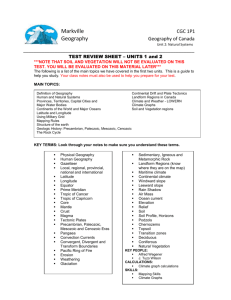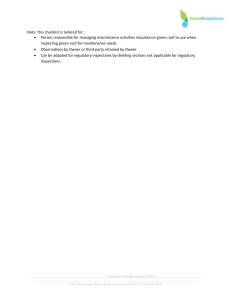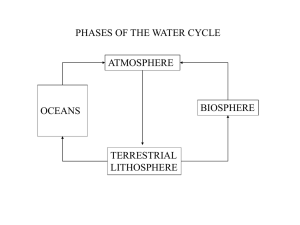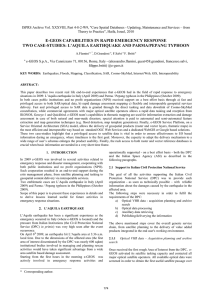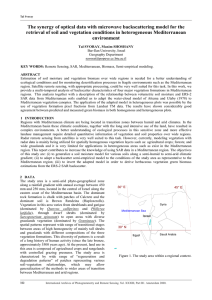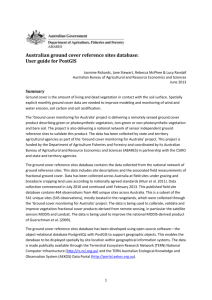HYDROCOSMO: THE MONITORING OF HYDROLOGICAL
advertisement
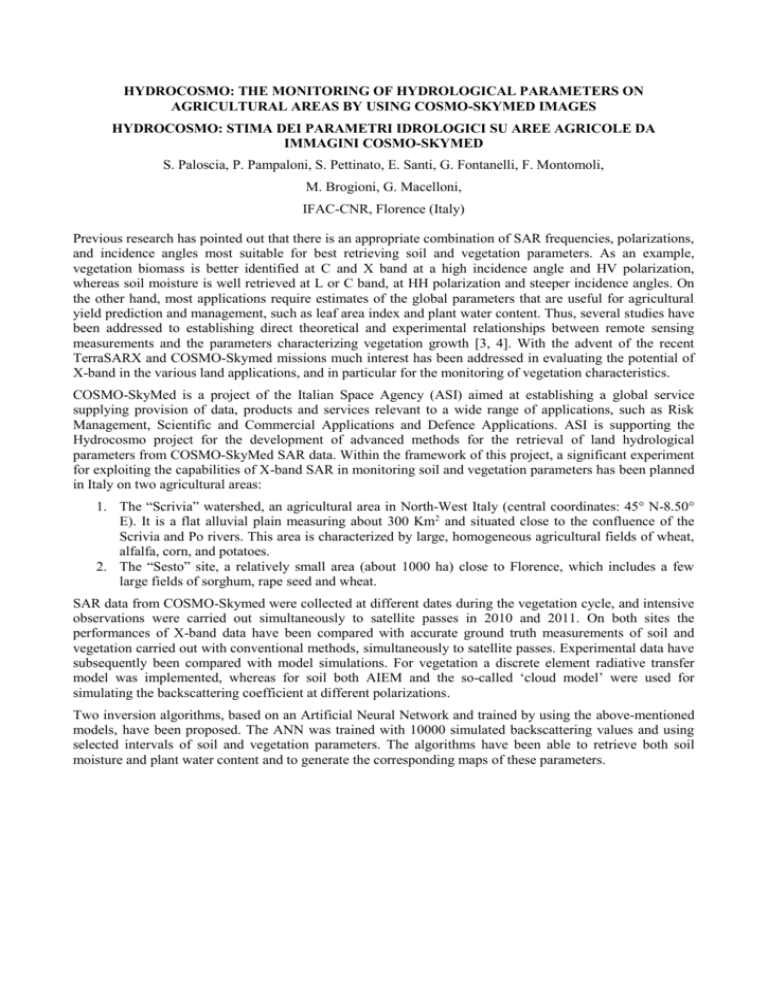
HYDROCOSMO: THE MONITORING OF HYDROLOGICAL PARAMETERS ON AGRICULTURAL AREAS BY USING COSMO-SKYMED IMAGES HYDROCOSMO: STIMA DEI PARAMETRI IDROLOGICI SU AREE AGRICOLE DA IMMAGINI COSMO-SKYMED S. Paloscia, P. Pampaloni, S. Pettinato, E. Santi, G. Fontanelli, F. Montomoli, M. Brogioni, G. Macelloni, IFAC-CNR, Florence (Italy) Previous research has pointed out that there is an appropriate combination of SAR frequencies, polarizations, and incidence angles most suitable for best retrieving soil and vegetation parameters. As an example, vegetation biomass is better identified at C and X band at a high incidence angle and HV polarization, whereas soil moisture is well retrieved at L or C band, at HH polarization and steeper incidence angles. On the other hand, most applications require estimates of the global parameters that are useful for agricultural yield prediction and management, such as leaf area index and plant water content. Thus, several studies have been addressed to establishing direct theoretical and experimental relationships between remote sensing measurements and the parameters characterizing vegetation growth [3, 4]. With the advent of the recent TerraSARX and COSMO-Skymed missions much interest has been addressed in evaluating the potential of X-band in the various land applications, and in particular for the monitoring of vegetation characteristics. COSMO-SkyMed is a project of the Italian Space Agency (ASI) aimed at establishing a global service supplying provision of data, products and services relevant to a wide range of applications, such as Risk Management, Scientific and Commercial Applications and Defence Applications. ASI is supporting the Hydrocosmo project for the development of advanced methods for the retrieval of land hydrological parameters from COSMO-SkyMed SAR data. Within the framework of this project, a significant experiment for exploiting the capabilities of X-band SAR in monitoring soil and vegetation parameters has been planned in Italy on two agricultural areas: 1. The “Scrivia” watershed, an agricultural area in North-West Italy (central coordinates: 45° N-8.50° E). It is a flat alluvial plain measuring about 300 Km2 and situated close to the confluence of the Scrivia and Po rivers. This area is characterized by large, homogeneous agricultural fields of wheat, alfalfa, corn, and potatoes. 2. The “Sesto” site, a relatively small area (about 1000 ha) close to Florence, which includes a few large fields of sorghum, rape seed and wheat. SAR data from COSMO-Skymed were collected at different dates during the vegetation cycle, and intensive observations were carried out simultaneously to satellite passes in 2010 and 2011. On both sites the performances of X-band data have been compared with accurate ground truth measurements of soil and vegetation carried out with conventional methods, simultaneously to satellite passes. Experimental data have subsequently been compared with model simulations. For vegetation a discrete element radiative transfer model was implemented, whereas for soil both AIEM and the so-called ‘cloud model’ were used for simulating the backscattering coefficient at different polarizations. Two inversion algorithms, based on an Artificial Neural Network and trained by using the above-mentioned models, have been proposed. The ANN was trained with 10000 simulated backscattering values and using selected intervals of soil and vegetation parameters. The algorithms have been able to retrieve both soil moisture and plant water content and to generate the corresponding maps of these parameters.




